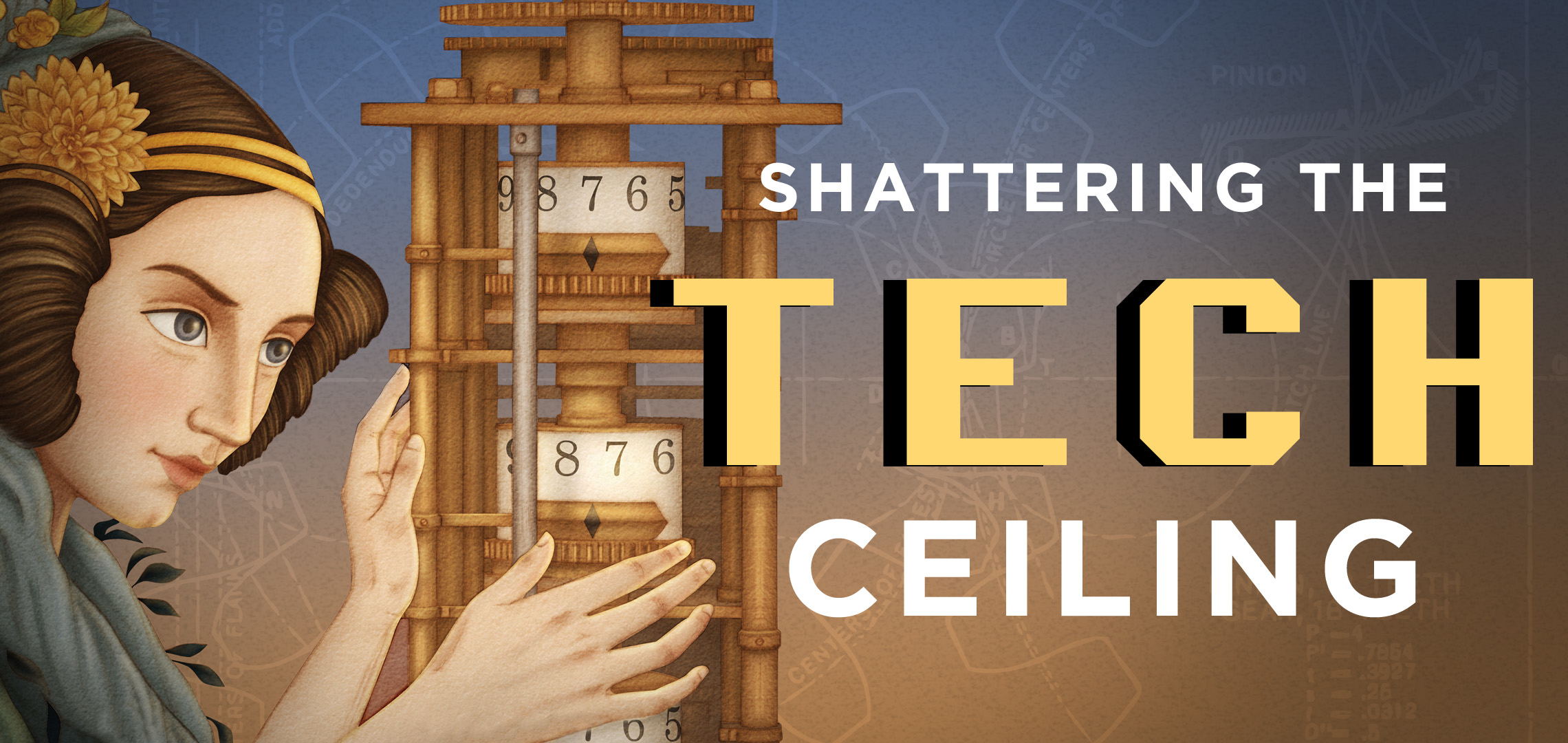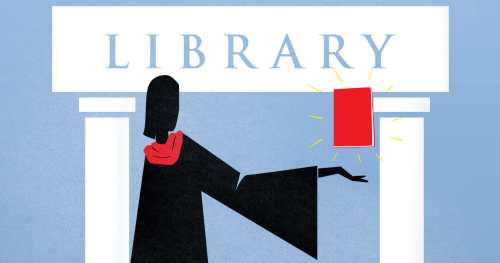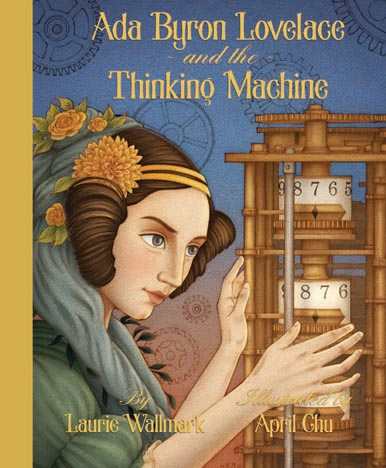Helping Girls Shatter the Tech Ceiling

You’d think that those who work in science and technology would, almost by definition, be open-minded and forward thinking. Unfortunately, if you measure tech industry attitudes by counting the number of workers who are not white males, you’d be sadly mistaken. In fact, tech companies have a problem with women and minorities. Some are trying to do something about it. And many educators, like Laurie Wallmark, believe that change begins at a young age, when girls can see that they don’t have to have XY chromosomes to excel in Science, Technology, Engineering, and Mathematics (STEM).
Wallmark’s book, Ada Byron Lovelace and the Thinking Machine, about a woman who pioneered the invention and development of computers (the literary among you might also know her as the daughter of Lord Byron, but she made a name for herself in her own right), shows young women how they were represented at the embryonic stage of the computer revolution. Take a look at the FTW interview with Wallmark below the news, where she talks about anti-women attitudes in tech, and what she would tell Ada if she could go back in time.
First, the News

The Open Access Revolution. Libraries, writes Anna Call, have “deep social justice roots,” and open access publishing may prove this: “yes, liberal arts institutions should be taken seriously. Yes, information should be free. Yes, libraries can make that change.”
Featured Reviews of the Week
The History Major, by Michael Phillip Cash. Everything in Amanda Green’s life seems a little off today, from her overwhelming feelings of deja vu to to the college course she can’t escape. Reviewed by Pallas Gates McCorquodale.
In Praise of American Educators, by Richard DuFour. This impassioned, authoritative work offers practical solutions for improving American schools and teachers. Reviewed by Barry Silverstein.
The Coal Thief, by Alane Adams. This beautiful picture book explores themes of right and wrong and is certain to provoke interesting conversations with children. Reviewed by Kelly Thunstrom.
I Punched Myself in the Eye, by Pamela Capone. Gentle humor enlivens these short autobiographical essays, charming snapshots of one Christian woman’s life. Reviewed by Anna Call.
Being a Captain is Hard Work, by Carole P. Roman. Captain No Beard is back, and his misadventures are about to teach a very important lesson: even leaders need help sometimes. Reviewed by Christine Canfield.
Laurie Wallmark
The tech industry suffers from a lack of diversity, including women. How important is it for young girls (or even boys) to know about Ada Lovelace’s contributions to the invention and development of computers?

Laurie Wallmark

Certain groups of children, such as girls, people of color, and those with physical or mental challenges are seriously underrepresented in technology. Fewer than 15 percent of software engineers are women. Because of this, young children come to believe that only some types of people should be working in tech. To counter this idea, children need to be shown the diversity of people in technology-related careers.
Books can act as both windows and mirrors to the world for children. As windows, books expose children to people, places, and situations which may be unfamiliar. As mirrors, books allow children to be inspired and encouraged by people similar to themselves. Books about women like Ada Byron Lovelace, the world’s first computer programmer, shatter the myth that technology is a “boys-only” club.
You have degrees biochemistry and information systems. And, today, you teach college-level computer science. Have you seen any changes over the years in the way women are accepted, or not accepted, into the male-dominated tech-geek club?
Believe it or not, there are fewer women in computer science now than when I first started in the field. During the time I studied programming in college, there wasn’t yet a computer science department. Programmers were recruited from other disciplines, such as math, engineering, and the sciences. Now, most software engineers have a degree in computer science or a related major. Until we increase the number of women in these majors or offer an alternative path to the profession, the field will remain male dominated.
Do you have any thoughts on the misogynistic Gamergate subculture that is not exactly welcoming of women’s influence in their traditionally male domain?
Gamergate is just the visible tip of the iceberg when it comes to harassment of women in technology. Both of my daughters are software engineers and have told me stories of behaviors directed at women and other underrepresented minorities at supposedly professional meetings. I am a strong supporter of the implementation and enforcement of anti-harassment policies. We are losing so much, as an industry and as individuals, by our refusal to stop this sort of behavior.
What is the secret to capturing the attention spans of young children—especially in a book that focuses on science and technology?
As with any other book, a good story is what will attract and keep the attention of readers—interesting people doing interesting things. With picture books, there is an added bonus. Good illustrations will encourage people to pick up and open the book.
But in writing a STEM-related book for children, there is an additional challenge. You need to be able to explain the science and technology is a manner accessible to children. If the concepts and facts are too difficult to understand, children will lay down the book in frustration. Done well though, STEM-related book will encourage children to embrace the fields of science, technology, engineering, and mathematics.
You invent a time machine. You go back to meet Ada Lovelace. What’s your first question?
Before asking Ada any question, I’d first introduce her to modern technology. I’d show her how all her amazing predictions, made 150 years before the invention of the modern computer, have come true. Ada predicted computing machines could be used to answer difficult math and engineering questions. She imagined they would one day draw pictures and play music. And she believed the language of mathematics could be used to create challenging games on the computer.
So my question to Ada? Now that you know what technology can do in the twenty-first century, what are your predictions about technology for the next 150 years?
